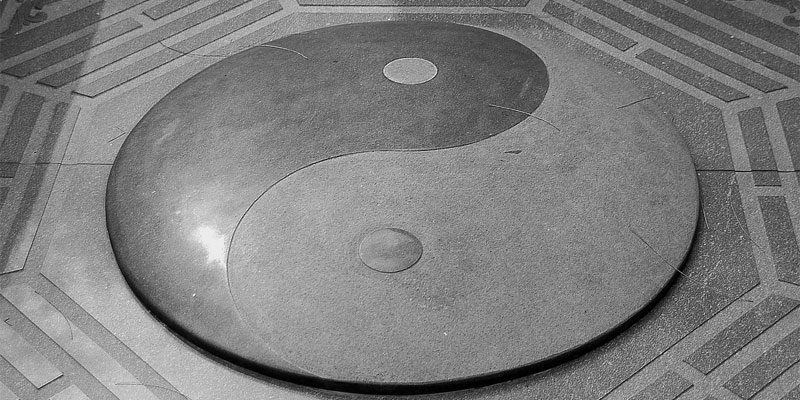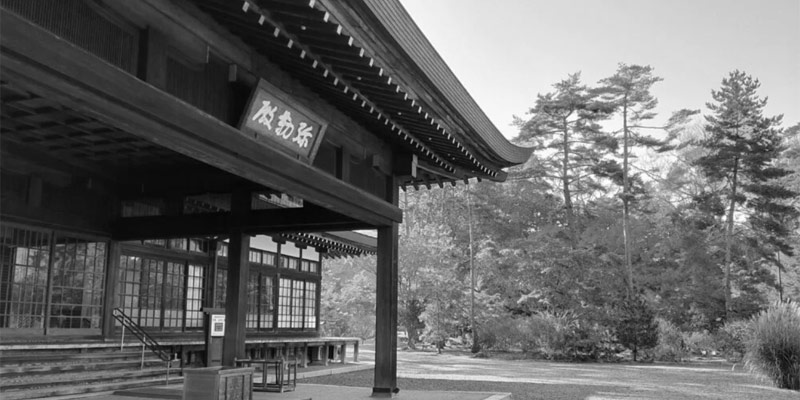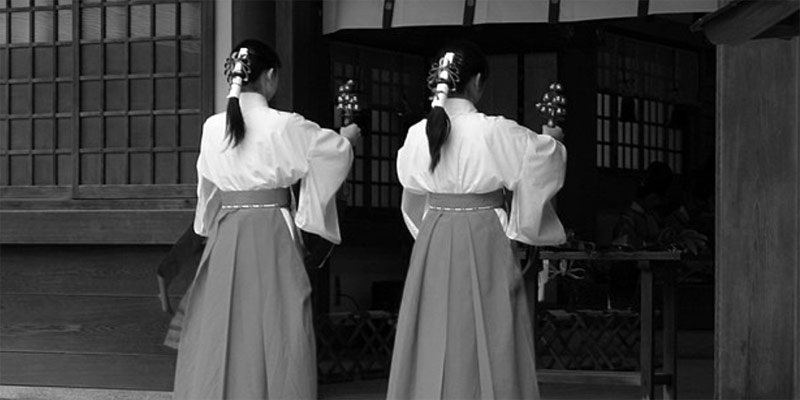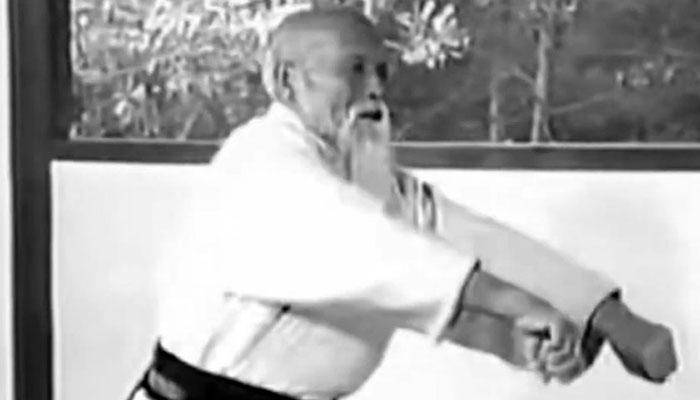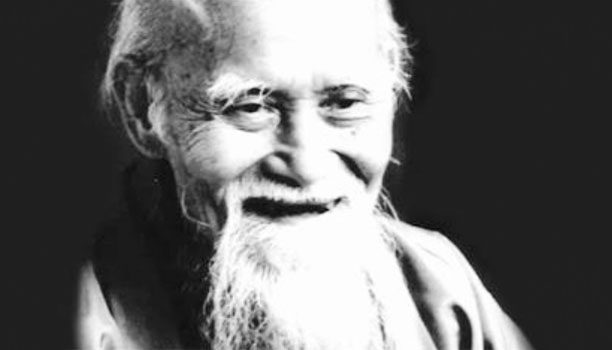-
Beyond Opposites: Rethinking Ju and Go in Aikido Philosophy
Ju 柔 (Softness) and Go 剛 (Hardness) are terms frequently used in martial arts. Conceptually, we often refer to a martial art or style as being “soft” or “hard”, but is this a meaningful or accurate expression? What are the true meanings of 柔 and 剛? Before diving into the details, let’s start with the question of whether it should be written as 剛柔 (Go-Ju) or 柔剛 (Ju-Go). Historically, 剛柔 is the more traditional and commonly seen order in Chinese classics and early Japanese literature. This form appears in ancient political and philosophical texts, such as Confucius’s Zhong Yong 中庸 (The Doctrine of the Mean) and the military treatise The…
-
Morihei Ueshiba, Onisaburo Deguchi, and the Second Omoto Incident
The Second Omoto Incident 第二次大本事件, which occurred in 1935, was a significant event in Japan’s modern history, involving the suppression of the Omoto religion by the Japanese government. Founded by Nao Deguchi 出口直 in the late 19th century, the Omoto religion combined elements of Shinto 神道 and other beliefs, promoting peace and universal harmony. It was led by Nao’s son-in-law, Onisaburo Deguchi 出口王仁三郎, a charismatic figure with ambitious visions for world peace and universalism. Omoto attracted followers nationwide; however, the religion’s perceived unconventional teachings and political influence attracted the scrutiny of the Japanese government, which led to the first major suppression in 1921, known as the First Omoto Incident 第一次大本事件.…
-
The Rise of a New Religion That Shaped Aikido and Sparked the First Omoto Incident
In the early 20th century, Japan witnessed the rise of Omoto 大本 (commonly called Omoto-kyo 大本教, though the formal name omits the “kyo” meaning religion). Its teachings significantly influenced the development of Aikido. Morihei Ueshiba, the founder of Aikido, was known to be a devoted follower of Omoto. However, the religion’s perceived unconventional teachings and political influence attracted the scrutiny of the Japanese government. The first major suppression of Omoto occurred in the early 1920s, marking a turbulent chapter in its history. Omoto-kyo, often considered a new Japanese religion with roots in Shinto 神道, was founded by Nao Deguchi 出口直. Nao, an ordinary housewife from the small town of Ayabe,…
-
Purification of Body and Soul: Misogi in Japanese Culture and Aikido
Misogi 禊, deeply rooted in Japanese culture and religious tradition, is a ritual of purification aimed at cleansing both the body and the spirit. Typically, the ritual involves immersing oneself in water, often a natural body of water like a river or waterfall, to wash away impurities and negative energies. The attire is typically white garments, but in many cases, men may wear a loincloth. The practice dates back centuries, and it is said to originate from Izanagi 伊邪那岐, a kami in Japanese mythology, who felt contaminated and purified himself with water after his visit to Yomi 黄泉, the world of death, to see his deceased wife Izanami 伊邪那美. Misogi…
-
Kotodama: The Spiritual Power of Words in Japanese Culture and Aikido
Kotodama 言霊 is closely connected with the life and teachings of Morihei Ueshiba, the founder of Aikido. Ueshiba was a deeply spiritual person who drew inspiration from the religious and philosophical traditions of Shinto 神道. Kotodama is a fundamental aspect of Shinto, an indigenous religion of Japan that has been integrated into various Japanese arts and practices, such as martial arts, traditional medicine, and music. Koto 言 means “word,” and dama 霊 means “spirit.” The term can be translated as “the spirit of words.” In kotodama practice, it is believed that each word and sound vibration has its own unique spiritual energy and power. One of the key principles of…
-
Sangen – The Triangle, Circle and Square in Aikido
The founder of Aikido, Morihei Ueshiba, used the symbols of the triangle, circle, and square (△ ○ □) to convey key philosophical concepts central to Aikido. These symbols represent the Sangen 三元 in the Shinto concept of Ichirei Shikon Sangen Hachiriki 一霊四魂三元八力, a framework used to explain the nature of the universe. While a detailed explanation of this concept is beyond the scope of this article, its basic understanding is as follows: Ichirei is the One Spirit, the single source of creation that forms all existence. Shikon refers to the four souls 奇霊, 荒霊, 和霊, 幸霊, which represent Wisdom 智, Bravery 勇, Intimate/Close 親 and Love 愛. Hachiriki refers to…
-
Exploring the Significance of Torifune and Furitama in Aikido and Shinto Practice
Torifune and Furitama are commonly practiced preparatory exercises in Aikido. Torifune 鳥船, which is typically translated as “bird rowing” or literally as “bird boat,” is also known as funakogi undo 船漕ぎ運動 or “boat rowing exercise.” The earliest mention of Torifune was in Kojiki 古事記, an ancient Japanese chronicle of myths, where it was referred to as Ame no Torifune 天の鳥船 (Heavenly Bird Boat). It was the name given to one of the deities born from Izanagi 伊邪那岐 and Izanami 伊邪那美, two of the most important kami (deities) in Japanese mythology. They are sister and brother, and also husband and wife, and they are the creators of the Japanese archipelago and…
-
A Very Brief Biography of the Founder
Morihei Ueshiba 植芝 盛平, known as O-Sensei (Great Teacher 大先生) by his followers, is the founder of Aikido. He lived during a time of great social, political, and economic upheaval in Japan. Born in 1883 in Wakayama Prefecture 和歌山県, Ueshiba grew up in a country that was rapidly modernizing and westernizing, as the government implemented policies to modernize the country’s economy, education system, and military. As a young man, Ueshiba trained in a range of martial arts, including Jukenjutsu 銃剣術, Kenjutsu 剣術, Jujutsu 柔術 and Judo 柔道. He also served in the military during the Russo-Japanese War of 1904-1905, where he saw firsthand the devastating effects of violence and war.…
